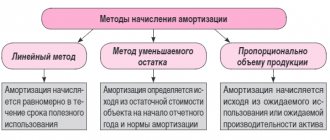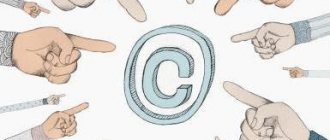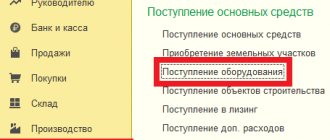Application of PBU “Fixed Assets” in 2021
PBU 6/01 (hereinafter referred to as PBU) was established by order of the Ministry of Finance of the Russian Federation dated March 30, 2001 No. 26n.
Organizations of all forms and areas of activity, except for credit and budget institutions (clause 1 of PBU), are required to comply with the rules of PBU 6/01 “Accounting for fixed assets”. An individual entrepreneur has the right to make a choice: to apply the PBU “Fixed Assets” or not to apply. A more detailed study of the rules of this PBU and the nuances of their application will be clearer when considering them using a specific example.
OS adoption
Example
Zoo-land LLC sells reptiles, fish and equipment for them through a stationary store. In April 2021, the organization purchased equipment:
- An aquarium for keeping fish in a store, costing 52,530 rubles. including VAT.
- A terrarium for keeping reptiles in a store, worth RUB 252,360. including VAT.
- An aquarium intended for resale, worth RUB 48,490. including VAT.
- Exhibition rack, costing 41,640 rubles. including VAT.
The following fees were paid for installation: for the terrarium - 12,710 rubles. including VAT, for an aquarium – 5,280 rubles. including VAT.
Whether the purchased equipment belongs to the OS is determined based on 5 criteria of our PBU:
| Criteria for classification as OS | PBU 6/01 | Aquarium for keeping fish | Terrarium for keeping reptiles | Aquarium for resale | Exhibition rack | |
| 1 | Designed for use in business activities | subp. and point 4 | Yes | Yes | Yes | Yes |
| 2 | Designed for long-term use (over 1 year) | subp. b paragraph 4 | Yes | Yes | Yes | Yes |
| 3 | Not applicable as goods for resale | subp. in paragraph 4 | Yes | Yes | No | Yes |
| 4 | Designed to benefit | subp. g p. 4 | Yes | Yes | Yes | Yes |
| Cost upon acceptance for accounting | p. 7-8 | RUB 48,175 = (52 530 + 5 280) : 120 * 100 | RUB 220,892 = (252 360 + 12 710) : 120 * 100 | RUB 40,408 = 48 490 : 120 * 100 | RUB 34,700 = 41 640 : 120 * 100 | |
| 5 | Compliance with the limit on the value of fixed assets for acceptance in accounting | para. 4 p. 5 | Yes | Yes | Yes | No |
| Acceptance in accounting as OS | TOTAL | Yes | Yes | No, accepted as goods for resale | accepted either as OS or as inventory (at the organization’s choice) | |
IMPORTANT! The limit on the cost of fixed assets for acceptance in tax accounting (TA) is 100,000 rubles (clause 1 of article 256 of the Tax Code of the Russian Federation and clause 1 of article 257 of the Tax Code of the Russian Federation). The maximum cost of fixed assets in accounting still remains at the same level: 40,000 rubles.
For fixed assets registered from the beginning of 2021 at an original cost of more than 40,000 to 100,000 rubles, income tax payers have to take into account temporary differences between expenses in tax and accounting.
For an example of how to account for temporary differences, see here.
In our example, only the terrarium is accepted as a depreciable fixed asset in the NU. An aquarium for fish, accepted in accounting (BU) as an OS, is reflected in the NU as part of material costs (subsection 3, clause 1, article 254 of the Tax Code of the Russian Federation).
Whether it is necessary to keep records of assets under the simplified tax system and how to do it correctly, find out in the Ready-made solution from ConsultantPlus. If you do not have access to the system, get a trial demo access for free.
How to reliably disclose information about reserves in reporting
The amount of information that must be disclosed in the financial statements regarding reserves is large. In addition to the book value at the beginning and end of the reporting period, it is necessary to reflect information regarding:
- reconciliation of inventory balances at actual cost and impairment at the beginning and end of the reporting period and inventory movements for the same period;
- the reasons that led to the restoration of the reserve;
- the book value of assets for which the organization has restrictions, for example collateral;
- methods for calculating the cost of inventories, and if they change in the new reporting period, it is necessary to disclose information about the consequences of such a change;
- advances and deposits transferred to suppliers, carriers and inventory processors.
Depreciation of fixed assets
According to PBU 6/01 “Accounting for Fixed Assets,” the useful life (abbreviated as SPI) of property is established by organizations based on the planned period of use, depreciation and other time restrictions on the use of fixed assets (clause 20 of PBU). There is no clear division of objects by SPI. To bring together the procedure for reflecting depreciation costs in accounting records with NU, organizations use the Classification of fixed assets by depreciation groups, approved by Decree of the Government of the Russian Federation dated January 1, 2002 No. 1. The use of this classification when establishing SPI is reflected in paragraph 1 of Art. 258 Tax Code of the Russian Federation.
Example (continued)
Aquariums and terrariums purchased by Zoo-land LLC, according to the OS Classification, belong to depreciation group 6 (SPI 10 - 15 years).
When reflecting on April 18, 2021 in the BU of the fish aquarium and terrarium as the OS, the company entered the SPI: 132 months for the aquarium and 144 months for the terrarium.
The accounting policy of Zoo-land LLC establishes a linear method for determining the depreciation of fixed assets.
The monthly amount of fixed assets depreciation was:
Aquarium for keeping fish: RUB 48,175. : 132 months = 365 rub.
Terrarium for keeping reptiles: RUB 220,892. : 144 months = 1,534 rub.
The calculated depreciation for the aquarium and terrarium is reflected in the accounting system from May (from the month following the month they were taken into account) (clause 21 of the PBU).
In clause 18 of the PBU under consideration, 4 methods of determining depreciation are recorded:
- Linear.
Simplest. The calculation algorithm specified in clause 19 of the PBU coincides with the linear method of calculating depreciation, enshrined in Art. 259.1 of the Tax Code of the Russian Federation, which makes it possible to bring closer the NU and BU of depreciation costs. Used by most organizations.
Details are in the article “Linear method of calculating depreciation of fixed assets (example, formula).”
- Reducing balance.
Complex calculation algorithm. There is no equivalent method of depreciation enshrined in the Tax Code of the Russian Federation, therefore additional difficulties arise in the form of reflecting temporary differences between NU and BU depreciation costs. Designed for accelerated write-off of the cost of the operating system. The use of this method is advisable for equipment that quickly becomes obsolete in moral terms.
Read about the features of this method in the article “Formula and example of the reducing balance of depreciation.”
- Based on the sum of the numbers of SPI years.
A labor-intensive technique in calculus. There is no equivalent depreciation method approved in the Tax Code of the Russian Federation, therefore its use leads to the emergence of temporary differences between the NU and BU depreciation. Refers to accelerated methods of depreciation of fixed assets.
For more information on this method of depreciation, see the article “How to correctly apply the cumulative depreciation method?”
- Proportional to the volume of production (work).
Labor-intensive to calculate. There is no equivalent method for calculating depreciation in the Tax Code of the Russian Federation, which leads to differences between the NU and BU depreciation charges. Designed for operating systems for which the planned amount of work for the entire useful life period is known. Used in relation to industrial equipment and transport.
How the assessment rules have changed
The main innovation of the federal standard is that now inventories will have to be assessed twice - upon receipt and after recognition. Moreover, in the first case, the rules for valuing different types of reserves will differ significantly from each other.
Valuation of inventories at recognition
All inventories must be recognized at actual cost. But what will shape it?
Inventories excluding finished goods and work in progress
For the bulk of inventories, the actual cost will be the amount of expenses aimed at acquiring assets, delivering them, and bringing them to a condition suitable for use or sale.
If inventories are received free of charge or settlements with their supplier are made in non-cash terms, then the inventories will have to be measured at fair value. In the first case - supplies received free of charge. In the second - the transferred property. This value is determined by IFRS 13 Fair Value Measurement.
Important! Costs associated with storage will no longer form the actual cost of inventories, except in cases where storage is one of the cycles of the technological process.
Work in progress and finished goods
The actual cost of these types of inventories is formed by the following costs:
- material;
- for wages;
- social security contributions;
- depreciation.
In accounting, a business entity must divide all costs into direct and indirect. The procedure for such division is best provided for in accounting policy. Direct costs will be attributed to specific products, and indirect costs will have to be distributed by type. Methods of distribution should also be reflected in accounting policies.
Nuances of recognizing inventory upon receipt
For certain categories of business entities, the FSB determines the nuances of recognizing inventories.
- Organizations that keep records in a simplified way have the right to recognize values without taking into account discounts and deferment conditions.
- Retail companies will be able to recognize goods at sales price with separate accounting for markups.
- For trading enterprises, funds spent on the procurement and delivery of goods to central warehouses are taken into account in sales costs.
Valuation of inventories after recognition
We have already become acquainted with the first quantity, let’s deal with the second. Net realizable value is the price less the estimated costs of producing, preparing for sale and selling inventory.
If actual cost exceeds net realizable value, inventory is impaired. This usually happens over time, due to obsolescence, etc. In this case, the organization is required to create a reserve for the amount of the specified excess. The book value will be formed from the actual cost of inventories minus the reserve.
For organizations with simplified accounting, creating a reserve is not necessary.
OS recovery
Example (continued)
After 2 years of using the aquarium and terrarium, Zoo-land LLC replaced the failed lighting in the aquarium for the amount of 2,620 rubles. (including VAT) and supplied the terrarium with more advanced ventilation and heating systems in the amount of RUB 46,730. (including VAT).
For the aquarium, repair costs excluding VAT are written off as expenses of the organization. For the terrarium, modernization costs are included in its initial cost (clause 14 and clause 27 of the PBU). The SPI for the terrarium has been revised upward for 3 years (clause 20 of the PBU).
The PBU under consideration does not provide explanations for determining the monthly depreciation of fixed assets after its modernization. Recalculation of depreciation is carried out on the basis of the example given in clause 60 of the Methodological Recommendations for Asset Accounting, approved by Order of the Ministry of Finance of the Russian Federation dated October 13, 2003 No. 91n.
Recalculation of depreciation of modernized equipment at Zoo-land LLC:
| Index | Aquarium | Terrarium |
| Classification of work performed | Repair | Modernization |
| Initial cost after work | RUB 48,175 (without changes) | RUB 259,834 = 220 892 + 46 730 :120 * 100 |
| SPI after work | 132 months (without changes) | 156 months = 144 (original) + 36 (added) – 24 (used) |
| Monthly depreciation after work | 365 rub. (without changes) | RUB 1,430 = (259,834 – 1,534*24 months) : 156 months. |
Important! An increase in the period in NU as a result of modernization of the OS is permissible within the range established by the Classification of OS for a certain depreciation group (Paragraph 2, Clause 1, Article 258 of the Tax Code of the Russian Federation).
Read more about accounting for OS modernization in the article “Modernization of fixed assets – accounting and tax accounting.”
Disposal of fixed assets
Example (continued)
After 7 years of use, the aquarium and terrarium are obsolete. Zoo-land LLC resold them to a local mini-zoo.
| Index | Aquarium | Terrarium |
| Sales price | 25,000 rub. | 170,000 rub. |
| Reflection of income in accounting | Other income of the current period (clause 31 of PBU) | |
| Residual value | RUB 17,515 = 48,175 – 365*84 months. | RUB 137,218 = 259,834 – (1,534*24 months + 1,430*60 months) |
| Write-off of residual value in accounting | Other expenses of the current period (clause 31 of PBU) | |
Others include income and expenses incurred not only during the sale of fixed assets, but also with other methods of disposal of fixed assets: liquidation, gratuitous transfer, contribution to the authorized capital of another organization, etc. (clause 29 of the PBU).
We write off inventories - what has been updated
The new standard requires inventory to be written off at a specific point in time. It could be:
- recognition of sales revenue;
- making other write-offs of inventories;
- lack of prospects for economic benefits from further use;
- impossibility of use in statutory activities - for non-profit organizations.
In this case, expenses should reflect the book value of inventories. For each of these cases, costs will be taken into account separately.
The methods for writing off inventories remain the same as those currently in effect and are enshrined in PBU 5:
- at the cost of each unit;
- at average cost;
- at the cost of the first inventory received by the organization - the FIFO method.
The chosen method must be fixed in the accounting policy.
Results
The PBU “Accounting for Fixed Assets ” provides general explanations for how recognition, depreciation, restoration and write-off of fixed assets are reflected in accounting records.
However, it lacks specific descriptions: the classification of operating systems according to the period of their use; on the calculation of depreciation when restoring the value of fixed assets and when using non-linear methods of depreciation charges. For clarifications and clarifications, one has to refer to the Methodological Instructions for Accounting for Assets, as well as to the Tax Code of the Russian Federation. You can find more complete information on the topic in ConsultantPlus. Free trial access to the system for 2 days.
What applies to reserves according to FSBU 5/2019
The definition that the federal standard gives to the concept of “reserves” is as follows:
This concept, in comparison with what PBU 5/01 gave, has been expanded by including new elements in the list:
In general, the list includes:
The ready-made K+ solution will tell you how to record the transfer of uniforms to employees when applying FSBU 5/2019. Sign up for a free trial and view all the content that interests you.
The standard also contains an indication of what does not apply to reserves. This:
- financial assets;
- valuables belonging to other persons, but located in the organization, for example, in storage, processing, maintenance;
- valuables received by a non-profit organization for subsequent free transfer to other persons.
Next, we will consider in what cases inventories are recognized and how they are valued in accounting.






